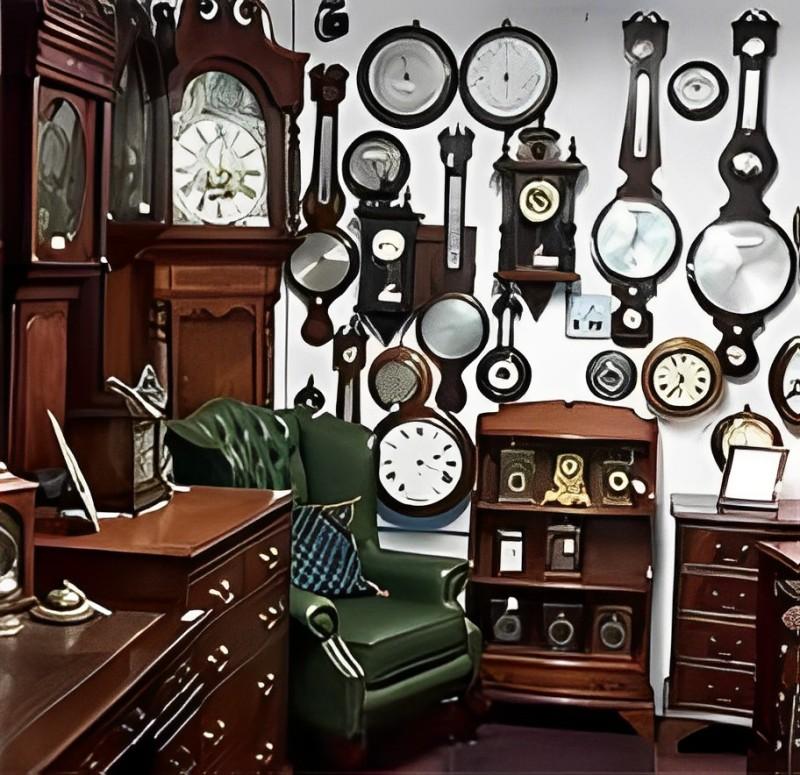Antique longcase clocks, often referred to as grandfather clocks, are not only functional timepieces but also exquisite pieces of art and history. These magnificent timekeepers have graced homes for centuries, showcasing the craftsmanship and attention to detail that has become synonymous with the past. However, the ravages of time can take a toll on these timeless treasures, necessitating careful restoration to preserve their beauty and functionality.
In this article, we'll delve into the world of antique longcase clock restoration, exploring the importance of preserving these historical timepieces and the intricate process that goes into bringing them back to their former glory.
The Significance of Antique Longcase Clocks
Antique longcase clocks, which typically stand at a stately height of around 6 to 8 feet, are more than just utilitarian objects that tell the time. They represent a bygone era of craftsmanship, artistry, and engineering. These timepieces were often the centerpiece of a room, not just for their timekeeping abilities but also as statements of wealth and style.
These clocks hold a significant place in history, with each one telling a unique story. They are an embodiment of the cultural, artistic, and technological advancements of their time. Antique longcase clocks were often made by skilled artisans who meticulously crafted the cases, dials, and movements, creating pieces that were not only functional but also aesthetically pleasing.
The Need for Restoration
Over the years, the effects of time, environmental conditions, and general wear and tear can cause antique longcase clocks to lose their luster. The cases may show signs of aging, the wooden components might suffer from warping or damage, and the clock movements may become less accurate. To ensure that these magnificent pieces of history continue to shine, restoration becomes a necessity.
Here are some of the reasons restoration is vital:
Preservation of History: Antique longcase clocks are a window into the past. Restoration helps preserve the historical significance and craftsmanship of these timepieces.
Maintaining Functionality: Many collectors and enthusiasts appreciate these clocks for their timekeeping abilities. Restoration ensures that the clocks continue to keep accurate time.
Investment Value: Restored antique longcase clocks often have higher value in the market. A well-maintained clock can become a valuable investment.
Aesthetic Appeal: Restoration can bring back the original beauty of the clock's case and dial, allowing it to shine as a work of art.
The Restoration Process
Antique longcase clock restoration is a meticulous and skilled process that requires a deep understanding of clock mechanisms, woodworking, and a keen eye for detail. Here's an overview of the restoration process:
Assessment: The first step is a thorough assessment of the clock's condition. This includes inspecting the clock movement, dial, case, and all components. The clockmaker will create a detailed report of the required work.
Dismantling: The clock is carefully dismantled, with each part cataloged and assessed individually.
Cleaning: The components are cleaned, and any signs of rust, dirt, or damage are addressed. This step is crucial for ensuring the clock functions correctly.
Restoration of Wooden Components: If the clock's wooden case or other wooden parts have suffered damage, they are carefully restored, including repairing, refinishing, or replacing parts as necessary.
Clock Movement Restoration: The clock movement is taken apart, cleaned, and any damaged or worn components are repaired or replaced. The escapement, gears, and springs are carefully examined and restored.
Dial Restoration: The clock's dial, often made of brass, may require cleaning, polishing, or restoration of any painted or enameled details.
Reassembly: Once all individual components are restored, the clock is reassembled with the utmost care and precision.
Testing and Calibration: The clock is tested for accuracy, and any adjustments needed to ensure it keeps accurate time are made. This step is crucial to the clock's functionality.
Finishing Touches: The clockmaker will add the finishing touches, ensuring the clock is not only functional but also aesthetically pleasing.
Preservation Tips for Antique Longcase Clocks
Proper Environment: Keep the clock in a stable environment with consistent temperature and humidity levels. Avoid placing it in direct sunlight or near heating or cooling vents.
Regular Maintenance: Schedule periodic maintenance to keep the clock running smoothly and to address any wear and tear before it becomes a significant issue.
Handle with Care: When winding the clock, handle the key gently to avoid damaging the winding mechanism. Be cautious when opening the door and handling the weights.
Professional Care: If you suspect any issues with your antique longcase clock, seek the expertise of a professional clock restorer or horologist.
In Conclusion
Antique longcase clocks are not just timekeepers; they are a link to history, craftsmanship, and artistry. Preserving these treasures through restoration ensures that they continue to tell their unique stories for generations to come. Whether you are a collector, enthusiast, or a steward of an antique longcase clock, the investment in restoration is an investment in preserving the past and the enjoyment of these magnificent timepieces.


